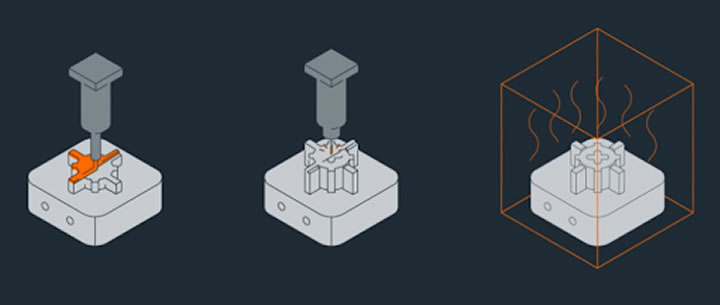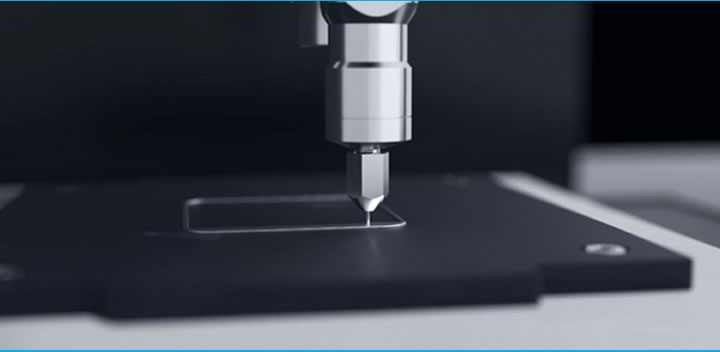A hybrid additive-subtractive technology named TrueShape is developed by the Californian company Mantle and based on 3D printing of preform molds. It uses metal pastes and parallel machining. The final stage includes sintering materials into high-strength steel components. Let’s talk about how it works and what it is for.

Discussing one or other additive technology in the context of mass production usually becomes a debate about the efficiency and economic feasibility of using 3D printing compared to traditional casting. Indeed, at the scale of millions of pieces, additive technologies can’t compete with traditional manufacturing although they’re usually more efficient in small-scale production, let alone prototyping. But it doesn’t mean that there is no place for additive technologies in mass production.

Plastic and metal consumer goods are usually produced using stamping or casting under pressure, but before tons of them are manufactured, there is a need to make equipment, which is a long, labor-intensive, and expensive process. But there is a way to print equipment itself, although it creates another set of problems: metal additive manufacturing technologies are very different but all of them are either expensive, slow, or require extensive post-processing. The TrueShape technology focuses on fixing these problems.

The process is based on the type of robocasting — extrusion-based 3D printing with metal pastes: technically thick suspensions with a small part of the binding agent. After the layer is placed, the material is heated for liquid evaporation. In the end, what’s left is a powder that keeps the shape using a binding agent that will be removed at a later stage. The powder consists of the particles of different fractions that are mixed in carefully chosen proportions which will make resources cheaper while keeping material denser.

After drying, a layer will be processed by a cutter. Since the part is still fresh and soft, it doesn’t take a lot of time. The cycle is repeated afterward until the mold is produced. The mold in turn will be sent for thermal processing which for binding agent removal and sintering into a finished product. The latter will require just a minimum of additional machining or will not require any.
The company claims that the process is more efficient and economical compared to other methods of metal 3D printing and traditional substrate-based equipment manufacturing techniques and is significantly cheaper. The production times, including the design times, are measured in days instead of weeks. The result is the products made of P2X (an equivalent of P20 tool steel with improved corrosion and wear resistance) or H13 tool steel with a possibility of being treated to the hardness of 50 (and higher) on the Rockwell C scale.
Mantle hasn’t announced the plans to make the technology commercially available but the company itself actively uses it for fulfilling equipment production orders. Their services were already used by a company named Future Shape led by Tony Fadell (who was once in charge of iPod and iPhone designs at Apple) and by L’Oreal. Additional information is available on the official website.

